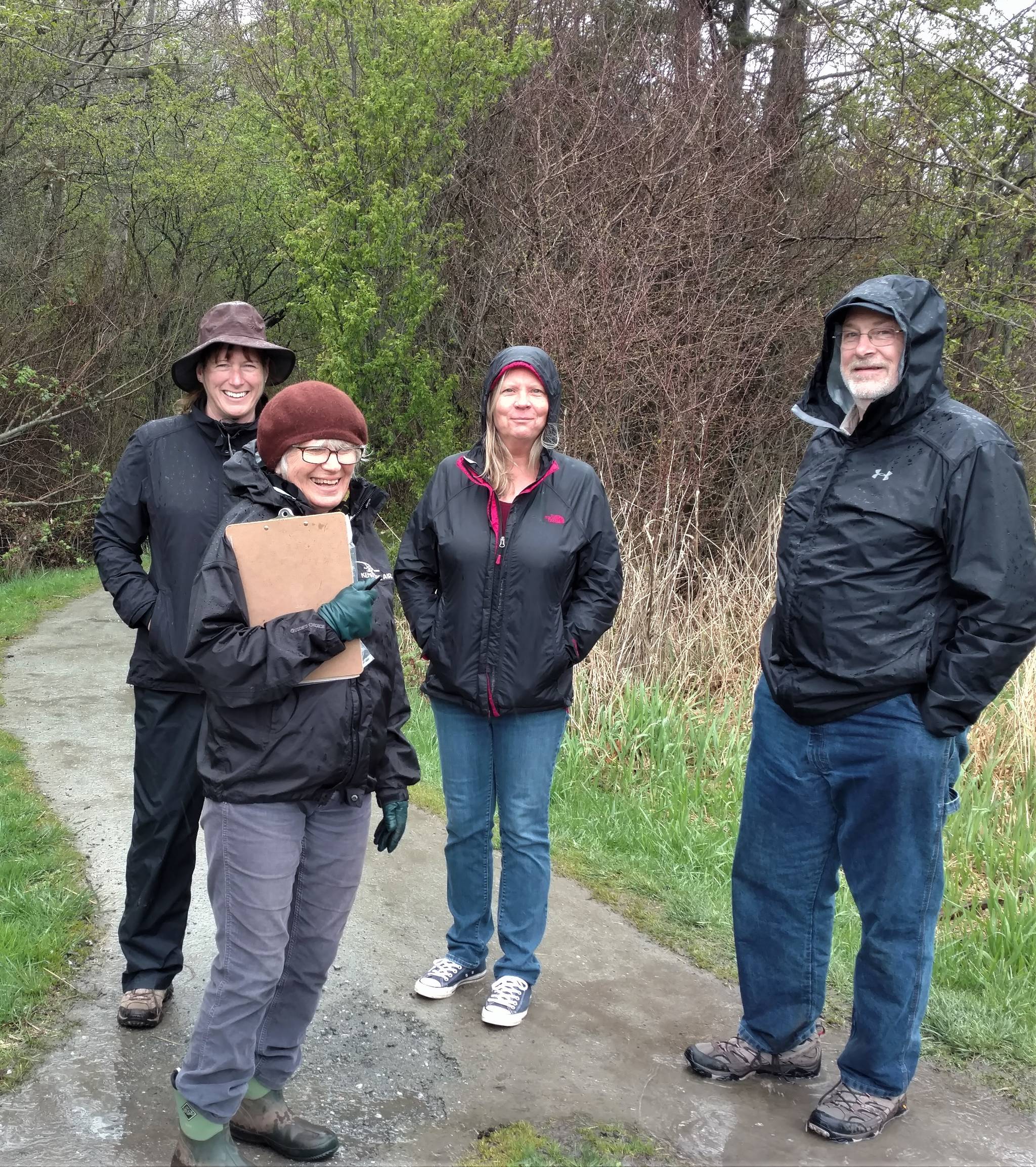Submitted by Toby Cooper.
The rain, while not a relentless downpour, still rendered the day gray, the ground squishy and set in motion exactly what rain always does in the village of Eastsound: a steady march of liquid in search of lower ground, and eventually, the ocean.
“Perfect,” said the county’s environmental resources manager Kendra Smith to the knot huddled around her in the athletic center parking lot. “The land is telling us everything we need to know.”
The group, which included members of the Eastsound Planning and Review Commission and island property owners, murmured its concurrence.
Eastsound Village sits in a basin. Rainwater hits the ground running – creeping, really — because the topography is gentle. Water moves in sheets more than creeks, and most of it ends up in a saturated greenbelt corridor stretching north to south through the spine of the village, known as the Eastsound swale.
“Eastsound is fortunate to have a mature, forested wetland right in the village,” said EPRC co-chair Margaret Payne. “Not only does it naturally treat stormwater before it enters the Salish Sea, it also offers the gift of a green and wild place in an urban setting.”
Water-borne sediments and contaminants are removed naturally, sending clean water under the Outlook Inn to the sound.
The dense growth of trees and grass-like sedges form an intricate trap for water-borne contaminants. Late Seattle activist and author Cass Turnbull, founder of the nonprofit advocacy group TreePac, unabashedly labeled green space like the swale a “public utility.” Turnbull’s spirit was clearly on board that day in Eastsound.
“The Swale,” added Smith, “is an amazing amenity, no question.”
EPRC co-chair Paul Kamin stood chatting with Clyde Duke, who owns the athletic center parcel and has recently purchased the lot directly north of it, west of the post offfice. Fifty percent of his new parcel is swale wetland and the other 50 percent is dry. Duke’s vision is to protect and enhance the wetland portion of his property.
“A forested wetland requires a shift of consciousness,” he said. “We hope this can become a model for other property owners whose lands extend to the Swale.”
Smith’s stormwater management plans include creating a system of “raingardens” – constructed mini swales that similarly soak up and treat storm water — in the parallel Prune Alley and Madrona Street corridors while still depending on the swale for everything else.
The group eventually convened around the big round table in OPAL’s conference room. Paul Kamin of the Eastsound Waters Users Association said, “The good news is that, despite a century of neglect and abuse, the Eastsound Swale is doing its job. With restoration, it will continue to serve indefinitely.”
Just getting “out of nature’s way” entails labor cost, however modest, and ideas for cooperation popped up quickly. The county’s “small works” program could offer grants. The county is forming a clean water district with a congruent mission. A “Team Swale” could be formed as part of future semiannual Great Island’s Clean-Up campaigns.
“I am so pleased just to see how much the county and the Orcas community values this special place,” Payne said.



